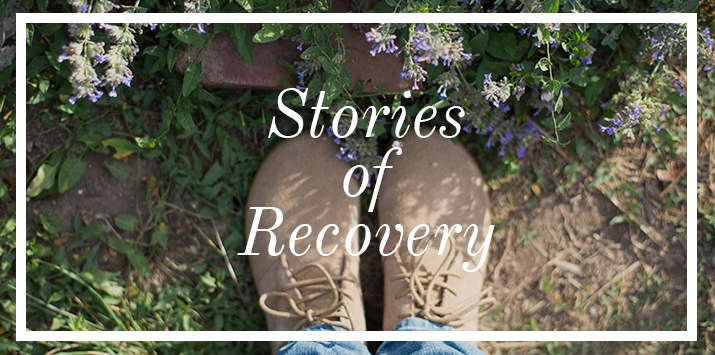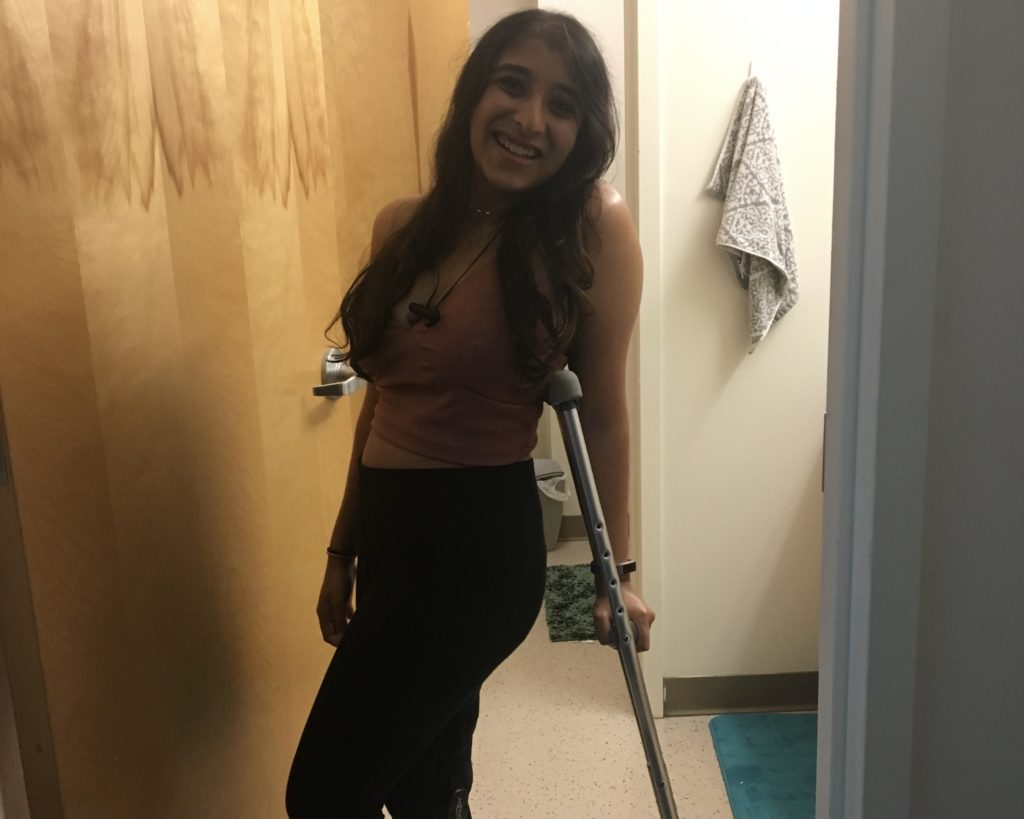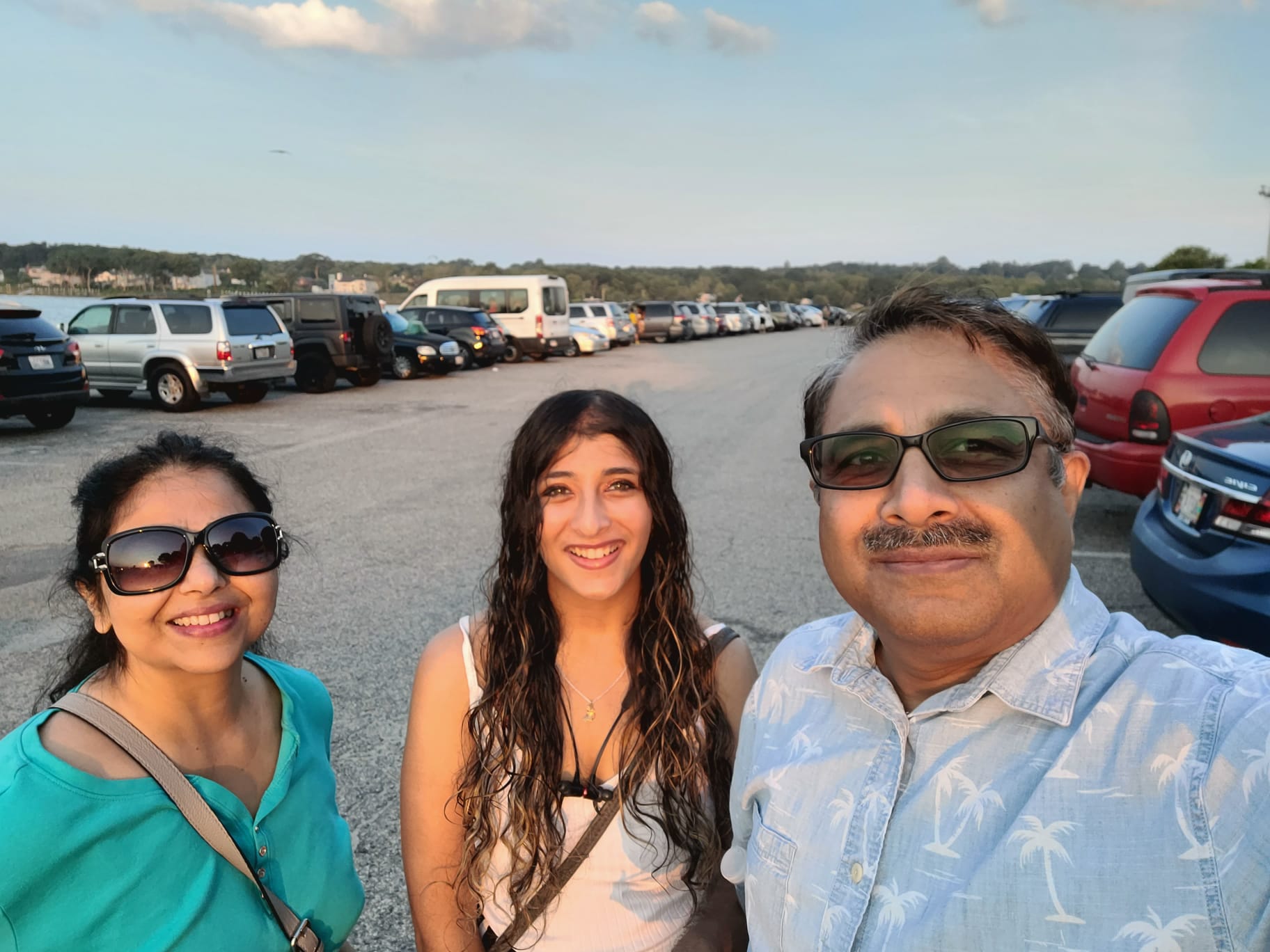This post contains affiliate links. Click here to see what that means! That being said, we only promote authors, products, and services that we use ourselves and wholeheartedly stand by. To learn more about how we earn money here on Autoimmune Wellness, head on over to our Promotional Policy.

AIP Stories of Recovery is a success story series about regular people from the Autoimmune Protocol community who are changing their lives using the protocol. Each month a new person is featured and readers have the opportunity to discover all the different health challenges that are being overcome by folks just like themselves on the same path. At Autoimmune Paleo we hope you’ll be inspired by, empathize with, and learn from these stories. If you are interested in sharing your story, please let us know by filling out our interest form.

Preksha has a unique and rare illness that we haven’t covered before on the blog: complex regional pain syndrome (CRPS). The pain that many folks with this condition experience is said to be higher than childbirth or amputation, making sheer survival a significant feat. For Preksha, the severity of her symptoms meant she had to drop out of college for a time, but happily, thanks to AIP and other holistic treatments, she’s now finishing up her bachelor’s degree in bioengineering!
What health issues are you dealing with, when did they begin, and how long did it take to get a diagnosis?
This all started in May 2019 when I initially started having pain in my right knee. I thought it was muscle strain from overuse and ignored it. Over the next few months, my pain started to increase while my mobility decreased. I couldn’t run and was only able to walk incredibly slowly. I made jokes about needing a cane as a teenager and continuing to ignore it. Then, one week before moving back to college for my second year, I finally got an X-ray. And my life changed.
I was diagnosed with a Giant Cell Tumor of Bone. After CT scans and MRIs, they told me the tumor was growing aggressively and that I would need surgery as soon as possible. During my surgery, they removed the tumor — after months of ignoring the pain, it had grown to quite a large size. They replaced the cells with cement and screwed in metal plates so that my right leg could bear weight.
I naively thought that it was done with; it would not impact my education and I would be back and ready to go within a week’s time. I couldn’t have been more wrong.
I went back to college after the first week and shockingly, I was not given any disability services or assistance during my recovery. My advisors attempted to push me to drop the semester instead of ensuring a student with crutches could get from class to class in time and be given an accessible chair to support them. I persevered and I started physical therapy.
The initial recovery was successful; over time, I got off crutches and was able to walk more. However, within the next four months I noticed my pain returning. Worried, I had another X-ray done that came back clear of tumors. Still in pain, I went back to college in January 2020, but within a week’s time I was unable to leave my bed. After fighting with my initial surgeon, we went to a second surgeon and had them check again with additional MRIs and CT scans. As it turned out, a small tumor had come back.
I was put on steroids, then opioids to help reduce my pain while I waited a month for the second surgery. I had no choice but to drop the semester and move home. Recovery took significantly longer after my second surgery in February 2020, which removed the metal plates along with my tumor. Due to the COVID-19 pandemic, I was not able to go to physical therapy and get the help I needed. However, I knew what I needed to do and started the exercises I had learned to do after my initial surgery. Over some time, I taught myself how to walk again. I wish this could have been the end of my story and that was the happy ending I wanted. I guess I just wasn’t that lucky.
Four months later, my inflammation had started to come back, and my right knee was double the size of my left. We went to my second surgeon with pictures and concerns, and he told me to “man up.” I left his office feeling helpless, sobbing uncontrollably about the intense pain I was in. I continued to struggle through physical therapy while I attempted to live a “normal” life. Although once winter came, my pain and stiffness increased profoundly until it got to the point where I physically was unable to walk outside. I was positive something was wrong and went to a third surgeon with my concerns.
In a 10-minute meeting, he hastily wrote down signs and symptoms of Complex Regional Pain Syndrome (CRPS), giving my family and I no explanation of what this disease was or what treatment plans looked like. It took me a couple of months to accept this half diagnosis, especially since I didn’t know what that meant for my future. Online, the information about CRPS is truly frightening — decades of extreme pain for those suffering, leaving many unable to work and feeling burdensome to their loved ones. Colloquially, it was dubbed “the suicide disease.”
I lived in fear that this would be my life as my pain rapidly increased to an unrelenting average of 6 to 7 out of 10. I knew I couldn’t survive if this continued; I got connected to a pain doctor who officially diagnosed me with Complex Regional Pain Syndrome in June 2021. That is where my path to recovery started.

Describe what the lowest point on your health journey was like.
At my lowest point, I was screaming and crying, often writhing in pain on an average of 8 to 9 pain level every day, with some 10 nights. Multiple times I fainted due to the amount of pain I was experiencing. I was more than miserable. The pain from complex regional pain syndrome has been described by crushing from molten rocks, severe burning all over your body, or a deep aching that leaves you immobile. With a 42 out of 50 on the McGill Pain scale, higher than childbirth or amputation of a digit, simply surviving CRPS is truly a major feat.
What challenges influenced you to look for a solution? Basically, what was the tipping point?
I was simply afraid — afraid of not being able to walk, not being able to sit, not being able to have a future. I was 20 and I needed to know that there was a life ahead of me that didn’t center on pain. I knew I couldn’t keep going like this; I knew I had to do something to find a treatment plan that could get me into remission.
When you found a protocol to help you heal, what was it and what was your first indication that it was working?
On my path to recovery, after quite a significant amount of research, I learned that CRPS is not only a neuropathic disease but an autoimmune disease as well. This is when I Initially learned about the autoimmune protocol and how effective it truly was for many individuals. I fortunately had some family friends who had gone on the autoimmune protocol diet before and were able to give us tips on how to get started. Together, my parents and I started changing our entire lifestyles in favor of a nutrition density diet. My first indication it was working was within the first few days of starting, when I was able to walk without extreme shooting pain for 10 minutes. So excited from this revelation, I then went on the elliptical and for 2 minutes did a very slow version of a cardio workout with the biggest, stupidest grin on my face. I was happy for the first time in months that my inflammation had decreased and knew I had to keep going.
What resources have you used on your healing journey so far and how did you find them?
On my journey to remission, I found certain YouTube channels very helpful such as RSDSA and foundations such as rsds.org. I researched as much as I could online about different treatments that helped people and started acupuncture, CBD oil, grounding, mirror therapy and focused on nutrition density. I tried hemp cream, a TENS unit, and RezziMax Tuner Pro device. These treatments together reduced my pain from an 8/9 to a 5. However, I still knew I could not go back to the physically and mentally demanding life in college with this pain level. This is when just three weeks before I was due to move into my on-campus apartment, I stumbled upon scrambler therapy.
Scrambler therapy, also known as Calmare therapy, is a new treatment method recently discovered to temporarily aid 75% of suffers with Complex Regional Pain Syndrome. I learned how impactful this noninvasive two-week treatment can be for individuals with neuropathic pain and for two weeks moved from my home in Connecticut to a hotel room in Rhode Island, hoping this would be my final solution to having a life again. After just a few days into the treatment, I knew it was working and by the end, this reduced my pain level to 1/2. Indeed, my life has truly changed.

Did your doctors suggest any treatments that you rejected and if so, why did you choose to try other methods?
Before taking the more holistic approach, there were many other treatments that pain doctors attempted to impose on me: nerve blocks, a spinal cord stimulator, and opioid medications. Unfortunately, chronic pain is not treated correctly in the medical community; simpler and more holistic treatments are not discussed in favor of invasive, cost-intensive, and often ineffective surgical treatments. The medication Gabapentin was prescribed to me three times to treat my CRPS, until the third time I finally caved and decided to take it. The brain fog, the mood swings and the overall fatigue experienced by this medication was comparable to oxytocin with very little benefit to decrease pain level — despite being one of the only medications regularly prescribed to treat CRPS. I quickly got off this medication within a few weeks in favor of other more holistic treatments.
It can seem like our lives are consumed by a chronic illness, but there is so much beyond those struggles. What brings you true joy right now?
No longer living in a world where my life was consumed by pain, true joy for me comes from spreading awareness about pain disorders like CRPS and fighting for others who are still suffering. When you are in that much pain, advocating for yourself simply is not an option. Often the only people who are speaking about these types of debilitating diseases are medical professionals or caregivers — but rarely the patients who have it. They deserve to be heard too.
Advocacy gave me the hope that kept me alive. I want to give that hope to others. Simply enjoying a second chance at life has been a blessing enough, and I’m truly never taking anything for granted again. I also want to thank my extremely supportive family and friends who stuck by me when the future seemed bleak. I am currently finishing up my last year in college pursuing a bachelor’s degree in bioengineering.
Would you like to share your Story of Recovery? Let us know by filling out our interest form.
















5 comments
Moved to tears by your journey. This girl is such a hero. I wish I could reach through the screen and give her a hug. Would love more details; maybe a follow up post? Perseverance and the support that she got from her family are both truly inspiring. Thank you very much for sharing this.
Thank you so much for sharing this hope-filled journey!
Thank you SO much for spotlighting CRPS!! I’ve struggled with CRPS all of my adult life and it’s been devastating. I’ve lost everything I’ve ever worked for and like Preeksha, I was terribly offended and extremely frustrated by the “doctor” who created the problem after operating on me five times, diagnosing me, insulting me, and failing to refer me to ANY follow-up care that could have resulted in remission. He told me to “Stop whining, grow up, and learn to live with it.” The single worst piece of medical “advice” I’ve ever been given!!!
My diagnosis came decades ago. CRPS wasn’t even mentioned on the Internet until 2000. I was denied ANY kind of treatment for the first 18 years and after that it was all about opioids, other meds, devices, etc. NOTHING that actually promotes healing. It’s all about “treatment” to expensively and chemically mask the exquisitely intense pain with outrageously costly drugs and devices that only “treat” symptoms. I’ve NEVER heard the term “heal” unless it’s been referred to in the context of recovery from surgery.
Through God’s grace and the interest of a fabulous and wonderfully kind friend, I’ve been following AIP eating for the last three months and am FINALLY beginning to feel some signs of improvement. Like Preeksha, I’ve done an enormous amount of research and am also continuing to pursue physical therapy (again/still!!) and other approaches to support my new AIP lifestyle.
It’s much, much more in the interest of Big Pharma and everyone but the patients to control the curricula of medical schools to ignore nutrition as a fundamental part of good health and healing even from conditions considered to be untreatable and incurable, like CRPS. One source says that three-quarters of every dollar spent on medical care is by/for patients like me. It’s far more lucrative to keep us sick and dependent on drugs and those who prescribe them…not at all to say that all doctors are driven solely by monetary incentives…but they’re not trained to know how to do much of anything else.
CRPS is an exceptionally lonely and isolating condition since no one, including the overwhelmingly vast majority of doctors I’ve encountered in the last 35 years, knows what it is, has ever heard about it, can’t/won’t believe that pain with some long cryptic name can ruin absolutely everything in life, and have no clue of how to even begin addressing it…even in the off chance they wanted to! Since most doctors are this out of touch and uninformed, the chances of others like family and friends understanding what CRPS is and how utterly devastating it is are almost exactly zero. It’s such a huge social advantage to have an illness, if you have to be sick, that a goodly number of people have actually heard of and have some understanding of what is involved with it!!
CRPS patients are at a 200% greater risk of suicide than the rest of the population. As Preeksha said, just staying alive is a major and uncommon accomplishment.
I’m relieved and delighted for Preeksha that she has become enabled to overcome her CRPS and again reclaim her life. Best wishes for future success and ongoing good health!
Another excellent resource for CRPS is burningnightscrps.org, a support organization run by and for CRPS patients based in the UK. They call CRPS patients “sufferers”, far more accurate and telling than the term “patients”.
Thank you, thank you for helping to raise awareness of Complex Regional Pain Syndrome (CRPS)!!!
Sue, thank you for your thoughtful comment and sharing your experience with CRPS. Wishing you the best as you continue to navigate!
My comments are for Preksha & and one of your posters, Sue, regarding CRPS. I’m well versed with the symptoms, diagnoses, and living with this horrendous disease. My question to both of you ladies is can you recommend a diet plan, cookbook, various recipes that help to not only get my weight under control, but help me with my added autoimmune diseases. Besides CRPS, I also have the following autoimmune conditions/diseases: Trigeminal neurology, Raynaud’s Phenomenon, Sjogren’s Disease, Fibromyalgia, and hypothyroidism. I’m also allergic to many foods, spices, and especially additives such as dyes, MSG, gluten, dairy, and eggs! Thank you for listening!
Sincerely, S Christians